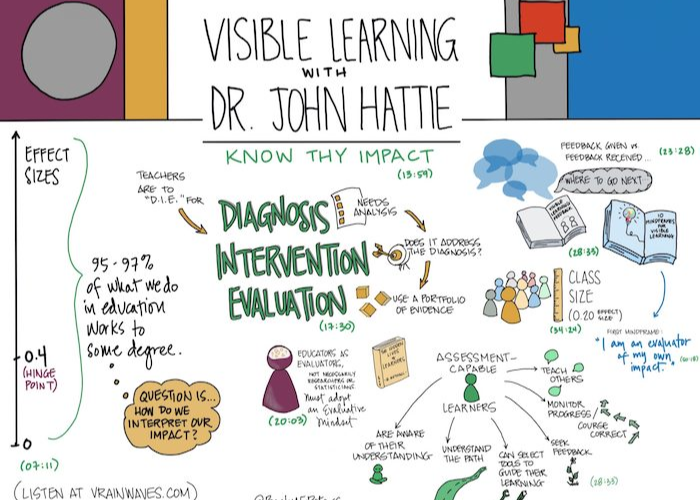
Visible Learning is an educational research project conducted by John Hattie, a professor of education at the University of Melbourne. It is a synthesis of over 800 meta-analyses, covering more than 80,000 studies of over 300 million students. The project was designed to identify the most effective strategies for improving student achievement, and it has become one of the most influential resources for educators around the world.
What is Visible Learning?
Visible Learning is a research-based approach to education that focuses on how teachers can use data to improve student achievement. It is based on the idea that teachers can use evidence-based strategies to identify what works best for their students and make changes to their teaching practices accordingly. The goal of visible learning is to help teachers create an environment that encourages students to take ownership of their learning and develop the skills and knowledge they need to be successful.
The Meta-Analysis in Visible Learning
The meta-analysis at the heart of Visible Learning is a massive undertaking that looks at the data from over 800 studies. It examines the factors that have an impact on student performance, including classroom instruction, assessment, learning environment, and teacher effectiveness. The project identifies the strategies that have the greatest impact on student achievement, such as providing feedback, encouraging student engagement, and providing meaningful tasks. It also looks at the differences between high-achieving and low-achieving students, and how teachers can use these differences to target their instruction for greater success.
Factors That Play a Role in Improving Achievement
Visible Learning identifies several key factors that can play a role in improving student achievement. These include providing meaningful tasks, using effective feedback, engaging students in the learning process, and creating an effective learning environment. In addition, teachers can use data to identify the areas where their students need the most help and target their instruction accordingly.
Actionable Strategies for Improving Achievement
Visible Learning provides several actionable strategies that teachers can use to improve student achievement. These include providing clear goals and expectations, giving effective feedback, and using data to identify areas of need. Teachers should also focus on engaging students in the learning process and creating an environment that encourages collaboration and problem-solving.
The Implications that Visible Learning Has on Education
Visible Learning has had a significant impact on the field of education. It has provided educators with a wealth of evidence-based strategies for improving student achievement, and it has helped teachers to create an environment that encourages active learning and collaboration. The research has also highlighted the importance of data in understanding student achievement and informing instructional decisions.
Conclusion
Visible Learning has revolutionized the field of education by providing evidence-based strategies for improving student achievement. Its synthesis of over 800 meta-analyses has highlighted the key factors that have an impact on student performance, and it has provided teachers with actionable strategies for improving student success. The research has also highlighted the importance of data in driving instructional decisions and creating an environment that encourages collaboration and problem-solving. Visible Learning has truly changed the way we think about education and has given us the tools we need to ensure that all students are given the opportunity to reach their full potential.




